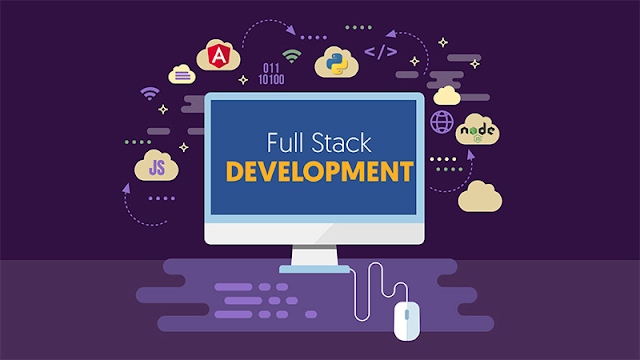Full Stack Development has been a cornerstone of modern web and application development, allowing developers to build robust and scalable solutions by mastering both front-end and back-end technologies. As the digital landscape continues to evolve, full stack developers are required to stay ahead of emerging trends and technologies. But what does the future hold for Full Stack Development?
Let’s explore the key trends and innovations that are shaping the next generation of full stack development.
1. The Rise of JAMstack
The JAMstack (JavaScript, APIs, and Markup) architecture is gaining traction as a new approach to web development. Unlike traditional server-side architectures, JAMstack decouples the front-end from the back-end, resulting in faster and more secure applications. As APIs become more powerful and JavaScript frameworks continue to evolve, JAMstack is poised to become a standard in full stack development, offering improved performance and scalability.
2. Serverless Architecture
Serverless computing is another trend that’s redefining the way applications are developed and deployed. With serverless architecture, developers can focus on writing code without worrying about server management. This allows for more efficient resource utilization and reduced costs. As serverless platforms like AWS Lambda and Google Cloud Functions continue to mature, full stack developers will increasingly adopt serverless architecture to build and scale applications more efficiently.
3. Low-Code and No-Code Platforms
The rise of low-code and no-code platforms is democratizing software development, enabling non-developers to create applications with minimal coding knowledge. While this might seem like a threat to traditional full stack development, it’s more likely to complement it. Full stack developers will play a crucial role in integrating these platforms with custom code, creating hybrid solutions that leverage the best of both worlds. As these platforms become more sophisticated, full stack developers will need to adapt by learning how to work alongside them.
Also Read: The Role of Databases in Full Stack Development
4. Artificial Intelligence and Machine Learning Integration
AI and ML are no longer just buzzwords; they are becoming integral parts of modern applications. Full stack developers will increasingly need to integrate AI and ML capabilities into their applications, enabling smarter and more personalized user experiences. This will require a solid understanding of data science and machine learning frameworks, as well as the ability to implement and optimize AI-driven features on both the front-end and back-end.
5. Microservices and Containerization
Microservices architecture, which involves breaking down applications into smaller, independent services, is becoming the preferred method for building scalable and maintainable applications. Containerization technologies like Docker and Kubernetes are playing a key role in this shift, allowing developers to deploy and manage microservices more effectively. Full stack developers will need to become proficient in microservices architecture and containerization to stay competitive in the future job market.
6. Progressive Web Apps (PWAs)
Progressive Web Apps (PWAs) offer the best of both web and mobile apps, providing users with a fast, reliable, and engaging experience. PWAs are becoming increasingly popular due to their ability to work offline, load quickly, and provide a native app-like experience. As mobile usage continues to dominate, full stack developers will need to prioritize the development of PWAs, ensuring that applications are optimized for mobile devices while still delivering a seamless user experience across all platforms.
7. Enhanced Focus on Security
With the rise of cyber threats, security is becoming a top priority in full stack development. Developers will need to stay updated on the latest security practices and tools, including encryption, authentication, and secure API development. As regulations like GDPR and CCPA continue to evolve, full stack developers will also need to ensure that their applications comply with these standards, protecting user data and maintaining trust.
8. DevOps and Continuous Integration/Continuous Deployment (CI/CD)
The integration of DevOps practices and CI/CD pipelines is streamlining the development process, allowing for faster and more reliable releases. Full stack developers will need to embrace DevOps methodologies, learning how to automate testing, deployment, and monitoring processes. This shift towards a more collaborative and automated development environment will enable full stack teams to deliver high-quality applications with greater speed and agility.
9. The Growth of Web3 and Blockchain
Web3, the decentralized web, and blockchain technologies are set to revolutionize the internet as we know it. Full stack developers will need to familiarize themselves with these emerging technologies, learning how to build decentralized applications (dApps) and integrate blockchain features like smart contracts and decentralized storage. As the demand for Web3 solutions grows, full stack developers with blockchain expertise will be in high demand.
10. Emphasis on User Experience (UX)
As competition in the digital space intensifies, delivering a superior user experience is more important than ever. Full stack developers will need to work closely with UX designers to create intuitive and user-friendly interfaces, ensuring that applications not only function well but also delight users. This will involve staying up-to-date with the latest design trends, accessibility standards, and user testing methodologies.
Conclusion
The future of Full Stack Development is bright and full of opportunities, but it requires continuous learning and adaptation. Developers who stay updated with emerging trends like JAMstack, serverless architecture, AI integration, and Web3 will thrive in this evolving landscape. Enrolling in an Online Full Stack Course can help you gain the skills needed to navigate these changes and remain competitive.
By mastering new technologies and methodologies, you'll be well-equipped to build innovative, scalable applications that meet the demands of the future. Embrace these advancements, and take advantage of learning opportunities to ensure your expertise stays relevant in the ever-changing world of full stack development.
